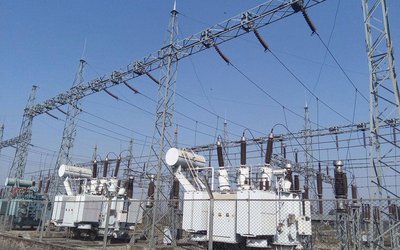There are more than 500 million adolescent girls in the developing world today. More than 3 million of them – aged 10 to 19 – live in Nepal. There are 3 million smiles and 3 million ways to look at the world. Imagine 3 million adolescent girls educated, healthy and happily enjoying their childhood in their homes, schools and public spaces. Adolescence is a crucial period of life and a vulnerable one: young girls and boys experience body changes, deepen their values, develop new relationships and start dreaming about their future. Decisions they make or that they are forced to make will shape their life. This critical period demands continued safe spaces for adolescent girls to ask questions, learn from their mistakes, assume new responsibilities and take a step closer to achieving their dreams. UNFPA believes that is certainly not a time for a child to give birth to another child.
However, many harsh realities stand in the way of realizing the dreams of our adolescent girls such as poverty of opportunities, gender discrimination and inequality, multiple forms of violence, abuse and exploitation, child labor, child marriage, adolescent pregnancy, deep rooted patriarchal norms and values to name a few.
Adolescent pregnancy is a key developmental issue. It is a health issue. Adolescents girls under the age of 15 are up to five times more likely to die in childbirth than women in their 20s. Pregnant mothers, if too young are at a high risk of dying while giving birth or suffering from complications, including obstetric fistula and uterine prolapsed. This is in fact the number one cause of death among adolescent girls. When the first child is born to a mother aged 12-20, the child is at greater risk of dying before age 5, being stunted, underweight and suffering from anemia than when born to a mother aged 24-26.
It is a socio-economic issue. The price of adolescent pregnancy is hindered potential, delayed education, stubborn poverty for the poorest and first-time young mothers and fathers. Whether married or unmarried, girls become pregnant for many complex reasons. Pregnancy could be unplanned resulting from experimentation without knowledge to prevent it. The overwhelming majority of adolescent girls who become pregnant in Nepal are married and pressured to have a child. There is also a direct correlation between lack of education and child marriage (72% of women 20-24 were married before 18 whereas this figure drops to 23% for women with secondary education of higher). Furthermore, 37% of married adolescent girls aged 15-19 or nearly two in every five girls are not working. The major reasons quoted for this are disapproval from their family to work and small children to look after. Even among those who are employed, 76.2% are not paid in cash or kind for their work.
It is a Right issue. Persistent gender inequalities, sexual violence, forced marriage, power imbalances between girls and their partners, lack of education, and the failure of systems and institutions that otherwise should be protecting their rights give rise to a number of human rights violations.
How can we help preventing adolescent pregnancies in Nepal?
About 1 in 5 girls aged 15 to 19 in Nepal are mothers or pregnant. Yet the vast majority doesn’t use contraceptives (86% of married adolescents aged 15-19) and have the highest unmet need for family planning (about 42%, highest in South Asia). Hence the risks of a child giving birth to a child are very high. More programs are needed to help them delay the first pregnancy and space subsequent pregnancies. These programs should promote access to and utilization of modern contraceptives.
Given that adolescent pregnancies are of particular concern among rural and uneducated adolescent girls, more efforts are needed to increase access to adolescent- and youth-friendly services. Such services need to be delivered in a sensitive, confidential, non-judgmental, and non-discriminatory way, regardless of marital status. They should include sexual and reproductive health and HIV information and services, including contraception, prevention and treatment of STIs and HIV and maternal health services, regardless of marital status.
Since the educational status of adolescents and youth influences many health indicators, collaboration between the health and education sectors is key, particularly in the provision of age-appropriate comprehensive Sexuality education.
Nepal has a lot of recent data on adolescents (including the 2011 Nepal Demographic and Health Survey, the Nepal Adolescent and Youth Survey and the National Population and Housing Census). Policies and strategies related to adolescent and young people Sexual and reproductive health should be updated and operationalized. This includes the national population policy that the Ministry of Health and Population is currently drafting.
Underlying all these issues and efforts is the understanding that the dignity and human rights of adolescent girls must be respected, protected and fulfilled. Girls’ rights to health, education, skills building and a life free of coercion and fear deserve our full attention. We must invest in them, protect them and include them in the post-2015 development agenda.
We call on the Government of Nepal, the international community and all stakeholders involved to take measures that will enable adolescent girls to make responsible life choices and to provide the necessary support when their rights are threatened. Every young girl, regardless of where she lives or her socio-economic circumstances, has the right to fulfill her human potential. Today, too many girls are denied that right. We can change that, and we must.
( Excerpts of the Speech delivered on World Population Day 2013.)

Giulia Vallese
Ms. Vallese is UNFPA Representative to Nepal
- Nepal Is Poised To Reap A Demographic Dividend
- Jul 11, 2016
- Women and girls in Nepal are still suffering from obstetric fistula
- May 23, 2016
- World Population Day 2015More Than Ever Relevant to Nepal
- Jul 11, 2015
- Investing in Young People’
- Jul 15, 2014
- AP Population Conference
- Sep 02, 2013
















